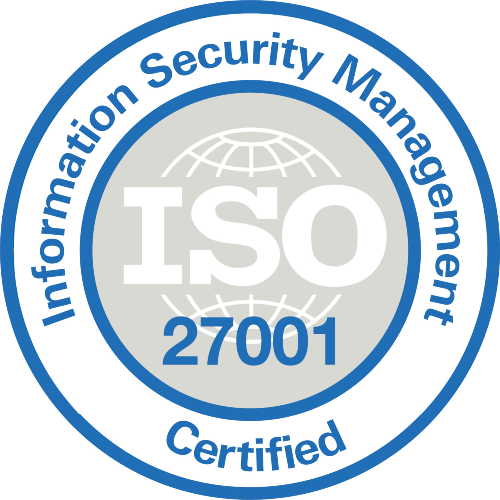In the ever-evolving landscape of marketing, adaptability iskey to achieving success. One of the most significant changes in recent timesis the impending demise of third-party cookies, a fundamental tool formulti-touch attribution and tracking in the marketing world. As these cookiesfade into obsolescence, companies must seek new strategies to ensure they canstill decipher the complex interplay of marketing channels, devices, and userinteractions to maximize their marketing performance. This then created an eraof cookieless attribution, and what we believe to be a temporary solution tothe challenge.
What is Marketing Attribution?
Marketing attribution involves dissecting the various touchpoints a consumer encounters on their journey to making a purchase decision. The primary aim is to pinpoint the channels and messages that had the most significant influence on the decision to convert or take the desired next step. Marketers use different attribution models, such as multi-touch attribution, lift studies, and time decay, to gain insights into how, where, and when consumers engage with brand messages. Armed with these insights, marketing teams can fine-tune and customize campaigns to cater to individual consumer preferences, ultimately boosting marketing ROI.
The Downsides of Cookie-Based Tracking
Before delving into the world of cookieless attribution,let's explore the limitations of cookie-based tracking, which relies on thesesmall data files to trace user activities across websites. There are threeprimary problems with this approach:
1. Targeting Devices, Not Users
- Cookies target specific devices, not individual users. In today's multi-device world, where users seamlessly switch between smartphones, laptops, and more, each device maintains its own set of cookies and user IDs. This limitation means you can't gain a comprehensive view of a user's journey.
2. Fragmented User Interactions
- Cookies have a limited lifespan, from seconds to years, depending on their type. Some, like session cookies, disappear as soon as a browser window is closed. This results in fragmented data and potentially missed insights into user interactions, hampering your ability to optimize your marketing funnel and boost revenue.
3. Privacy and Security Concerns
- Cookies can pose security and privacy risks. They can be exploited by criminals to access user accounts, as seen in the 2017 Yahoo hack. Additionally, third parties can access and utilize third-party cookies, potentially compromising user privacy.
What is Cookieless Attribution?
Cookieless attribution offers a way to gather informationabout website visits and interactions without storing user-identifiable data.Importantly, going cookieless doesn't mean sacrificing personalization ortracking; it's about prioritizing user experience, anonymity, privacy, andtrust. This approach avoids the use of cookies containing personal informationand user identifiers, potentially negating the need for intrusive cookieconsent banners.
How Does Cookieless Attribution Work?
There are various methods to track user interactions withoutcookies.
1. Fingerprinting, is one of the most commonmethods and assigns a unique ID to each visitor based on known data points likeIP addresses, screen resolutions, and browser languages. While this is a usefulapproach, it alone may not provide a complete understanding of a user's journeyto conversion or also gain complete consumer consent.
2. First-Party Cookies, this common and durablecookie that is set in the client’s browser. This collects no PII and no userdata but allows brands to gain a view of their audiences.
3. User authentication, this growing area sees thebrand gaining a common log in across their sites and apps to sync the user’susage and devices. Commonly this is done via a Customer Data Platform (CDP) andprovides a stronger view and a device graph – yet doesn’t encapsulate all ofthe data when users are anonymous (not logged in)
Benefits of Cookieless Attribution for Marketing
The advantages of adopting cookieless attribution arethreefold:
1. Enhanced Control and Privacy for Users
- Cookieless tracking enhances user privacy by preventing third parties from placing cookies on browsers. It ensures users' anonymity and gives them greater control over the data they share online.
2. Improved Accuracy of Data
- Cookieless attribution provides more accurate tracking of user actions and conversions. Unlike cookie-based tracking, which can be blocked or deleted by users. This results in more precise data, enabling marketers to better understand user behaviour and attribute conversions correctly.
3. Cross-Device Tracking – known users
- In a world where users access the internet through a variety of devices, cookieless attribution excels in tracking user journeys across different platforms. This capability offers marketers a more comprehensive understanding of user behaviour, particularly valuable for ad targeting and conversion attribution in the multi-channel and omnichannel marketing landscape.
Limitations of Cookieless Attribution
While cookieless marketing is an inevitability, it's doeshave some challenges. One challenge is that measurement becomes more difficultwithout third-party cookies – as this is the existing ‘infrastructure’ it hasbeen built on. Having the need now for additional technologies (CDPs) canadd cost to a marketer’s programs – and this may not be budgeted for.
Conclusion
Attribution is regaining focus in market as brands andpublishers are struggling with the demise of third-party cookies and thechanges to the way browsers handle privacy. Fingerprinting could be limited inits feasibility as legislative changes could restrict the collection of thisuser behaviour data without consent.
We have proven that using a first-party cookie ID (like AdFixus) will provide businesses a greater view of the user data to the siteand allow visibility into the channel and thus attribution modelling. Whereclients have also invested into a CDP or data lake that syncs the known users,modelling can be enhanced to also cover for the brands device graph and wherecustomers are using multiple devices as a touch point.













